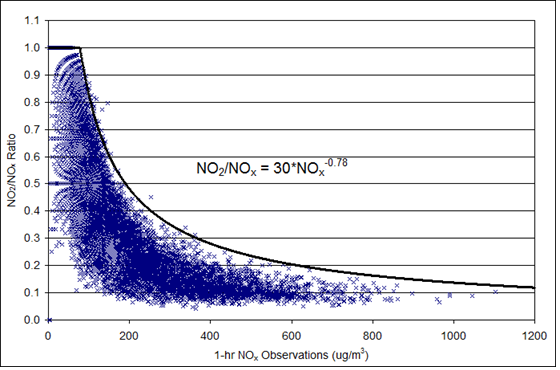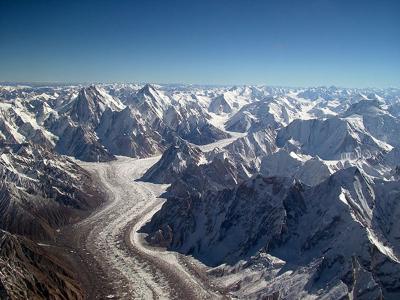- Air Homepage
- Alberta Air Quality
- Air Quality Dispersion Modelling
- How Nitrogen Dioxide Is Formed
How Nitrogen Dioxide is Formed and how it might Affect our Health.
Nitrogen dioxide (NO2) is created when nitrogen oxides (NOx) are converted into nitrogen dioxide by some chemical process. Understanding how nitrogen dioxide is formed is important for implementing policies to preserve our environment, and Canadian provinces take this seriously.
 Nitrogen and ozone here?
Nitrogen and ozone here?British Columbia's Ministry of Environment, for instance, has developed NO2 modelling guidelines to improve accuracy across a variety of developmental projects. In Total Conversion, all NOx emissions are assumed to turn into NO2, resulting in the highest estimated concentrations in the area. Real-time monitoring data provides input for practical techniques like ARM2 where we adjust conversion ratios based on local conditions. When ozone levels restrict NO2 formation, Ozone Limiting Methods (OLMs) are also used.
Some methods like ARM2 are less data-intensive, whereas other methods, like Plume Volume Molar Ratio Method (PVMRM) and OLM, require ambient ozone data for assessing more complex scenarios. The provincial governments recommend advanced dispersion models like AERMOD and CALPUFF because they can handle different meteorological conditions. It's important for modellers to justify their assumptions and provide detailed reports on NO2/NOx ratios, ozone levels, and source characteristics.
Understanding nitrogen dioxide formation is crucial to reducing NO2 pollution. By using the methods as outlined below, environmental professionals can minimize public health risks and meet regulatory goals.
What's the point of reading about NO2 formation?
- Health Impact: NO2 causes respiratory issues. Readers can protect themselves and their communities by understanding how it forms.
- Professionals in environmental fields need to stay on top of air quality modelling guidelines. In regions like British Columbia, Alberta and Saskatchewan, this page provides a roadmap for complying with strict regulations.
- Curiosity: A complex interaction between atmospheric chemistry, pollution, and weather patterns makes nitrogen dioxide formation interesting and fun.
- Concern: O2 isn't just a pollutant; it also contributes to acid rain and ozone depletion. Understanding how nitrogen dioxide is formed and controlled is inspired by chemistry, pollution studies and weather patterns.
- Solutions: NO2 predictions can be fine-tuned using methods like ARM2 and OLM with this guide.
Nitrogen dioxide can appear through a lot of ways, but understanding how it forms can help us predict and control it. Here are a few examples of how nitrogen dioxide is formed.
Anthropogenic and natural sources of NO2:
When NOx react with oxygen or ozone in the atmosphere, NO2 is formed. Anthropogenic sources of NO2 include vehicles: emissions from cars and trucks, power plants: combustion of fossil fuels, industrial processes: manufacturing activities, ships and airplanes: large transportation-related emissions. Thunderstorms, fires and microbial processes in soil and water also produce NO2.
In combustion processes and industrial emissions, NO2 is formed when NOx reacts with oxygen or ozone in the atmosphere. Various algorithms can be used to estimate this conversion.
Estimation programs and accuracy:
NO2 concentrations are estimated using PVMRM, OLM, as well as the Ambient Ratio Method (ARM). Accuracy varies among these methods:
- OLM and PVMRM both estimate NO2 formation by determining the amount of ozone entrained in the plume. However, when plumes overlap, they can overestimate NO2.
- As it adjusts the ratio based on empirical relationships between ambient NOx and NO2 concentrations, ARM is less sophisticated than PVMRM but it can produce more realistic results when good data is available.
Modelling Nitrogen Dioxide Dispersion in British Columbia
The British Columbia Ministry of Environment and Climate Change Strategy has developed guidelines for modelling ambient NO2 concentrations. Also, methods to obtain NO2 concentrations from nitrogen oxide emissions have been updated by the Ministry. NO2 is a major concern for human health and the environment, so it's important to convert nitric-oxide (NO, which forms the majority of NOx) to NO2 in prescribed ways. A step-by-step approach is used for estimating how nitrogen dioxide is formed and how much:
- 100% Conversion: Assume all NO is converted to NO2.
- ARM: Use monitoring data for NO and NO2 to derive a conversion formula.
- If monitoring data aren't available, use the Ozone Limiting Method (OLM).
- AERSCREEN and AERMOD applications have internal processes that Limit NO to NO2 conversion based on available ozone and plume characteristics.
Equations or procedures are provided for each method in the BC guideline, taking into account factors like baseline concentrations and merging plumes. Pay attention to a separate document entitled Guidance for NO2 Dispersion Modelling in British Columbia. The chosen methods need to be justified and approved by the Ministry. The CALPUFF chemical conversion modules can also predict NO2 concentrations, but their direct use isn't recommended until further evaluation.
To improve accuracy and consistency across projects, this guidance clarifies assumptions and methods for NO2 modelling. It discusses levels of complexity for air dispersion model analyses and when each level is appropriate. For basic evaluations, Level 1 assessments use simple models, while Levels 2 and 3 use more detailed models.
Additionally, the document outlines various methods for predicting NO2 concentrations and highlights changes from previously sanctioned procedures. Besides giving guidance on how to pick baseline NO2 levels and how to use appropriate modelling techniques, it emphasizes the importance of considering NO to NO2 conversion when using any air dispersion model.
Furthermore, it explains how to use preferred models like AERMOD and AERSCREEN for different scenarios. This guide aims to make NO2 dispersion modelling in British Columbia more accurate and effective. The CALPUFF modelling system is recommended for modelling NO2 concentrations in British Columbia. CALPUFF accounts for different meteorological conditions, source configurations, and chemical reactions. There are three components: CALMET (meteorological model), CALPUFF (calculates concentration and deposition output), and CALPOST (used for analysis and display).
Appropriate cases for CALPUFF include complex meteorological conditions, multiple sources, gaseous and particulate deposition, and long-range transport. A variety of techniques are described for refining predictions of NO2 concentrations based on ambient and predicted conditions in the atmosphere. They range from simple assumptions to more complex models like ARM2, OLM, and PVMRM.
Due to its shorter run times and fewer input data requirements, ARM2 is recommended for NO2 Tier 2 modeling. Tier 3 techniques like OLM and PVMRM use ambient Ozone (O3) concentrations to calculate NO2 conversion and how nitrogen dioxide is formed. Additional inputs like background O3 concentrations and NO2-to-NOx In-Stack Ratio (ISR) values are needed.
Because of limited evaluation for NO2 estimates in British Columbia, other advanced and more obscure modelling techniques like RIVAD/ARM3, RIVAD/ISORROPIA, and photochemical grid models aren't recommended.
 Meteorological precision
Meteorological precisionAdditionally, it's important to pick appropriate NO2 baseline concentrations, which can affect modeling results. Based on monitoring data, site categories, and statistical analysis, the provincial guidance documentation provides methods for picking baseline concentrations.
This guidance aims to provide a comprehensive approach to modelling NO2 concentrations in BC, considering factors like source characteristics, meteorological conditions, and model accuracy. Applicants submitting models for NO2 dispersion modelling in BC should read this along with the BC Dispersion Modelling Guideline. Files required for the application package, including input and output files, are outlined. Together, they emphasize the importance of justifying model parameters, NO2/NOx chemistry assumptions, and selecting ambient monitoring datasets.
Topics covered include:
- NO2 modeling techniques (Tier 2 ARM, Tier 3 OLM, and PVMRM) and justification.
- Considering NO2 chemistry and the location of urban regions relative to the modelled source, justification for O3 datasets.
- Description and justification of the NO2 monitoring dataset.
- Include computer code for advanced processing methods like Monte Carlo statistical methods.
- Quality assurance and quality control (QA/QC) guidelines.
Additionally, the guides recommend assessing model performance by comparing modeled concentrations to monitored concentrations using a variety of methods such as:
- comparing summary concentrations,
- frequency statistics,
- robust highest concentrations,
- quantile-quantile (Q-Q) plots,
- timeseries plots
- and bias,
- error and correlation analysis.
ARM2 (Ambient Ratio Method Version 2) is a refined method for modelling NO2 concentrations. It's better than previous methods, considering varying NO2 to NOx concentration ratios in the atmosphere. ARM2 is good for modelling NO2 concentrations over a short period, like one hour, and requires less input data than other methods, simplifying the process.
One consulting firm has developed province-specific ARM2 curves using monitoring data from different site categories, like industrial, urban, rural, and coastal. Based on the specific characteristics of the area where a facility or project is located, these curves help refine NO2 model concentrations. Here is what one of those curves may look like:

In addition, the document discusses the ISR of NO2 to NOx, which is essential for modelling NO2 emissions. It gives you recommended ISR values for different equipment classes and fuel types, which can vary depending on the equipment usage.
It also refers us to O3 data, offering options for developing and using O3 datasets. It explains the importance of O3 monitoring and offers guidelines for selecting representative monitoring stations and developing O3 datasets for different regions, especially in rural areas.
Air Quality Assessments Using Advanced Techniques in Alberta
When using a conservative screening approach, all NOx emissions are assumed to be NO2, resulting in the highest possible concentration of NO2 at ground level. For all situations, the Total Conversion Method results must be included in the assessment. If the Air Quality Ambient Objectives (AAAQOs) for NO2 can be met with this method, there's no need for additional modelling. Otherwise, less overly-conservative methods may be considered.
ARM assumes the ratio of NO2 to NOx in a plume stabilizes at some distance from the source. In practice, it's hard to figure out this ratio. Data from suitable monitors within 15 km to 80 km downwind and in the general direction of maximum impact can be used.
 Rugged terrain maximizes plume impact
Rugged terrain maximizes plume impactIf it is not available, you can use a ratio of 0.7 as a default. ARM2 is a refined version of ARM with specific guidelines based on predicted NO2 levels. NO2/NOx ratios are determined by stack testing, manufacturer data, or literature. A default value of 0.2 is used if this information isn't available. Ratios should be justified in assessments, since incorrect values may require further refinements to the analysis.
Based on available ozone and initial source ratios, PVMRM limits the conversion of NOx to NO2. To calculate ambient NO2/NOx ratios, it also combines plumes from multiple sources. PVMRM (which is built into AERMOD) works best for isolated, elevated sources, but not for area sources or lines or groups close together. PVMRM uses onsite ozone data, a default NO2/NOx equilibrium ratio of 0.90, and ARM2 logic to figure out source ratios. As of now, PVMRM2 isn't available, but it might be in the future. Using source groups simplifies PVMRM, but avoid using the PSD Group option.
Using ambient ozone levels and stack emissions data, the OLM estimates ground-level NO2 concentrations. How nitrogen dioxide is formed is calculated by considering NOx conversion to NO2 and thermal NO2 production. NOx is converted to NO2 if ambient ozone levels are high enough; otherwise, a more complicated calculation is used.
For OLM, the appropriate ISRs follow the same procedure as for ARM2. PVMRM is preferred. To simplify grouping, use the OLMGROUP option in AERMOD. OLM may be applied to different scenarios, emphasizing the importance of considering both project and non-project sources.
If using CALPUFF, modellers should disable the model's chemistry option for regulatory purposes that don't involve acid deposition. For NO2 concentration modelling, methods like Total Conversion, ARM, and ARM2 are used. Emissions of NOx must be entered as NOx only.
Conversion algorithms can't be applied directly, but NO2 can be derived from CALPUFF's output file. Using ISR guidance, NOx emissions are separated into NO and thermal NO2. To determine NO2 levels at each receptor, OLM equations are applied as CALPUFF doesn't have PVMRM.
CALPUFF needs to be run twice when both air quality and acid deposition assessments are needed: once for air quality using no chemistry mode, and again for acid deposition and secondary particulate matter assessments using specific settings.
How Nitrogen Dioxide is Formed: Determined by Dispersion Modelling in Saskatchewan
The Total Conversion Method assumes that all NOx immediately turn into NO2. If this method shows the maximum modelled NO2 concentration exceeds air quality standards, then other methods can be considered. Any assessment report should include the how nitrogen dioxide is formed using the Total Conversion Method.
ARM estimates NO2 to NOx emitted from a stack, typically between 0.10 and 0.80. Based on ambient data from Saskatchewan, Alberta, and British Columbia, these ratios vary depending on the modelling purpose.
 Advanced plume analysis
Advanced plume analysisARM2, an extension of ARM, calculates NO2/NOx ratios based on data from over 580 North American stations. Polynomial equations define ARM2 ratios in AERMOD, ensuring both upper and lower bounds. For conservative results, the ratio derived using ARM2 should be at least 0.50. ARM isn't available in AERMOD versions 18081 and up.
It's recommended to use the PVMRM for isolated and elevated point sources. Based on the moles of NOx emitted and the moles of ozone in the plume, it calculates the conversion rate. The initial NO2/NOx ratio in the stack is also taken into account. PVMRM combines plumes from multiple sources and calculates ambient NO2/NOx.
The default recommendations include using monthly background ozone values, a NO2/NOx equilibrium ratio of 0.90, and considering in-stack ratios. It's not good for large groups of sources or near-surface releases. The PVMRM serves as a screening method.
OLM compares NOx estimates with ambient ozone concentrations to determine which limits NO2 production. When determining how nitrogen dioxide is formed, it's assumed all NOx converts to NO2 if the NOx concentration is low. The NO2 level is calculated based on ozone and NOx levels.
Based on OLM, some NOx emissions are NO2, and the remaining part reacts with ozone to make more NO2. Other chemical reactions or NO2 photodissociation aren't taken into account. Densely populated or industrial areas aren't a good setting for this method.
A note on CALPUFF: Each source in CALPUFF needs to be handled separately, and only NOx emissions need to be entered.
RIVAD/ARM3 and RIVAD/ISORROPIA aren't recommended for converting NOx to NO2. CALPUFF should be used without the chemistry option when modelling. Emissions from NOx should only be entered as NOx, and NO2 shouldn't be included.
Let us help you succeed with your next project.
Calvin Consulting Group Ltd. understands that air quality dispersion modelling can be crucial to your business - whether it's for securing operational approvals or managing emergency risks.
Our team of meteorologists and dispersion modellers has more than 95 years of combined experience. Even government agencies like Alberta Environment and Environment Canada have trained our experts.
We go beyond technical support. AERMOD and CALPUFF models are used to process detailed industrial and meteorological data for your site. Our reports meet all regulatory standards while enabling you to make choices to protect the environment and the nearby public. Everything you need for a smooth approval process is in the reports.
Get started today by contacting Barry at Calvin Consulting:

With Calvin Consulting, you get more than just a report; you get peace of mind knowing every detail has been addressed. You can rely on us for complex air quality assessments.
Clean air is our Passion...Regulatory Compliance is our Business.
It's important to control the formation of nitrogen dioxide (NO2).
Various methods are explained in western Canada's air quality guidelines for predicting NO2 levels. Ozone levels and nitrogen oxide (NOx) chemistry are taken into account in Total Conversion, ARM2, and the Ozone Limiting Method.
The provincial guidelines emphasize choosing the right model for different scenarios, like AERMOD for near-source emissions and CALPUFF for long-range transport. To meet air quality goals, NO2 modeling needs to be accurate and scientifically defensible.
Do you have concerns about air pollution in your area??
Perhaps modelling air pollution will provide the answers to your question.
That is what I do on a full-time basis. Find out if it is necessary for your project.
Have your Say...
on the StuffintheAir facebook page
Other topics listed in these guides:
The Stuff-in-the-Air Site Map
And,
Thank you to my research and writing assistants, ChatGPT and WordTune, as well as Wombo and others for the images.
GPT-4, OpenAI's large-scale language generation model (and others provided by Google and Meta), helped generate this text. As soon as draft language is generated, the author reviews, edits, and revises it to their own liking and is responsible for the content.


New! Comments
Do you like what you see here? Please let us know in the box below.